Bao’s name is mud back in Taiwan. It seems the London restaurant group is responsible for a shortage of a particularly fine variety of white soy sauce. They know this because one of their chefs was recently accosted by a disgruntled restaurant owner while visiting family in Taipei.
“They were talking about how great a product it is, but when it transpired that he worked for us the conversation took a turn for the worse,” says Shing Tat Chung, who runs the three-strong Bao business with sister Wai Ting and his wife Erchen Chang. “It was always hard to get hold of because it’s only made twice a year with the first skim of yellow soy beans but, apparently, we’ve made it even harder.”
Taiwan’s loss is London’s gain. This indescribably delicate, umami-packed condiment is a revelation when paired with a rump cap of well-aged Cornish beef sliced finely to achieve a ratio of one third yellowed fat to two thirds ruby-red meat, as it is at Bao’s Soho restaurant.
This pairing of top drawer Taiwanese and UK ingredients is a memorable one, and it also hints at the team’s culinary ambitions. Bao may have made its name with its eponymous gua bao – pillow-soft steamed buns packed with various fillings including the Taipei night market classic of braised pork belly, pickled mustard greens, fresh coriander and ground peanuts – but the entirely self-taught trio behind it have a lot more up their collective sleeves.
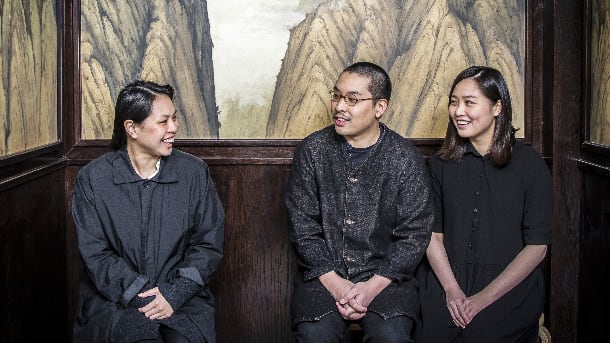
(Photo: Founding Trio - Wai Ting Chung, Shing Tat Chung and Erchen Chang (L-R) / John Carey)
Bao started life as a street-food stall and retains a semi-permanent site at Hackney’s Netil Market. Just over two years ago, the trio launched their first restaurant proper, in Soho, backed by JKS Restaurants, which runs three highly rated Indian restaurants in the capital and has bankrolled two other successful London restaurant outfits.
With its approachable price point – baos start at £4 and none of the other dishes on the small, dim-sum-style tick-box menu are over £6 – the diminutive Lexington Street site became one of the highest-grossing restaurants in London per square foot overnight. Then, last year, a second and much larger Bao opened in Fitzrovia, offering an extended menu.
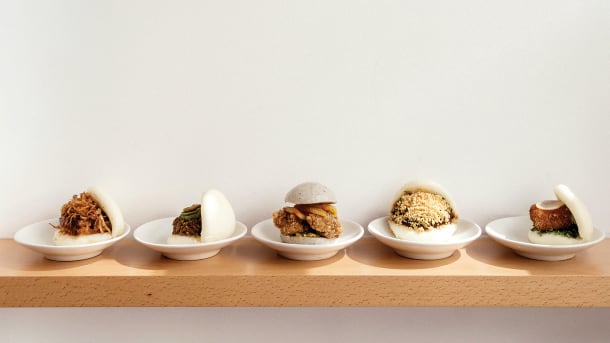
(Photo: Small but perfectly formed: Bao's buns / Bao)
Not content with having kick-started the trend for bao buns in London and beyond – the dish has started cropping up on pub menus across the country – later this month, the trio will venture into entirely new territory with the opening of Xu (pronounced ‘shu’), a far more ambitious, serious and refined restaurant on the fringes of Chinatown on Rupert Street.
“Xu will explore a different side of Taiwanese cuisine,” says Chang, who is effectively Xu and Bao’s head chef, overseeing all the kitchens and playing the lead role in food development.
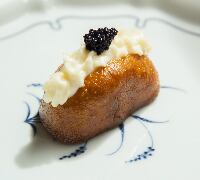
“Bao is an amalgamation of lots of different aspects of Taiwanese food and culture. The new restaurant will be more specific. We’ve taken a lot of inspiration for the design and menu from 1930s Taipei. Taiwan was ruled by Japan during this period so there is a lot of Japanese influence.”
Xu will be more grown-up than Bao. It will have a more formal feel and menu structure and will accept reservations for the majority of its tables – the original Bao restaurant in Soho is as famous for its queues as its buns – with the trio hoping to recreate the timeless, well-worn feel of some of Chinatown’s more venerable establishments.
From the Midlands to Soho via Taiwan
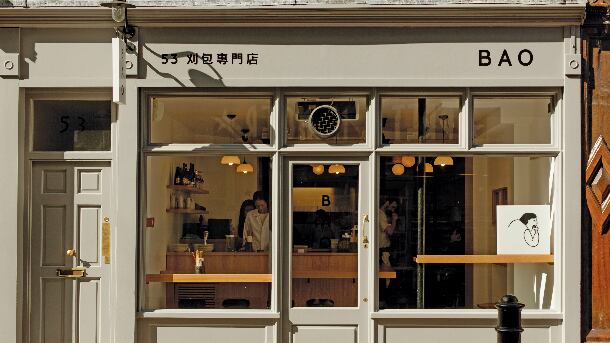
(Photo: Bun site: Bao Soho)
Siblings Shing Tat and Wai Ting are Cantonese and grew up in Nottingham where their family ran a string of common-or-garden Anglo- Chinese restaurants. Chang is from Taiwan and moved to London with her parents in her teens.
All three studied art and design-related degrees, with Shing Tat and Chang meeting at London’s prestigious Slade School of Fine Art.
This background is evident at Bao, visible in its minimalist branding, its carefully thought-out restaurant design and even its core product.
“Everything has to be cute and small,” explains Chang, who took future husband Shing Tat on a tour of her homeland shortly after they met.
“Back in Taiwan, gua bao are much bigger, almost sandwich-sized, but we decided to make them in miniature. We didn’t want to run a restaurant where people could only order one item.”
The trio’s artistic leanings are even more apparent at Xu, which is named in honour of Chang’s late grandfather. Currently in the latter stages of fit out, when finished, the dark wood-clad restaurant will have an old-school glamour. The ground floor will house an emerald tea counter that seats up to 24 as well as two private dining rooms to the rear seating four people apiece beneath large murals that depict Taiwan’s famous mountain ranges.
Upstairs will have a more formal feel with a pink marble dining counter forming the centrepiece of the 44-cover dining space.
Moving on from buns
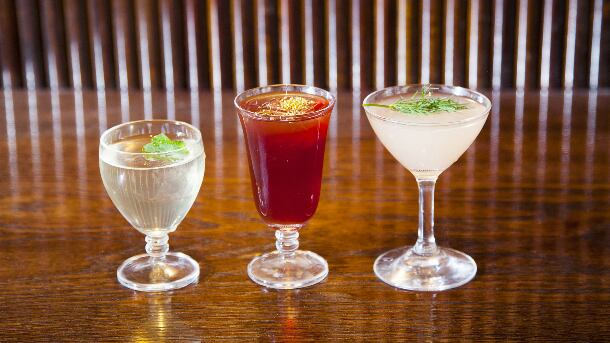
(Photo: Omakase mixology: Xu's daily changing selection of cocktails)
Taiwanese food has many similarities with its giant neighbour across the Taiwan Strait but influences from Japan and a number of European powers have forged a distinctive cuisine.
“We use bonito and miso without really questioning it,” says Chang, who, as Taiwanese tradition dictates, grew up eating huge, elaborate meals prepared by her grandmother.
“I have a big family so there were a lot of people for her to cater for. To make cooking and serving more manageable, and also to create a balanced meal, she would use lots of different cooking methods and serve some dishes cold.”
The menu at Xu will mirror this approach. It will be a bao-free zone, with sections including cold cuts and raw, xiao tsai (small plates designed to be eaten with alcohol), and a selection of wheat-based mian shi dishes.
The line-up within the latter will include some items that would not look out of place on a dim sum menu, including a scallop-based take on cheung fun; pan fried shengjian bao; and taro skin dumplings stuffed with Taiwanese sausage dressed in green chilli oil.
There will also be an emphasis on sharing dishes. Xu’s signature dish shou pa guinea fowl will comprise a whole rotisserie-cooked bird stuffed with ginger and star anise and served with the head on for two to three people to tear apart with their hands (shou pa means hand torn).
Other dishes designed to be shared by two or more diners include a platter of pickles and cold meats that includes duck ham cured with green Sichuan peppercorns, rabbit terrine and pressed cucumber; a suckling pig leg cooked in salt and served with yellow bean trotter sauce and pickled jelly fish; and a section of bak kwa, Taiwan’s answer to jerky.
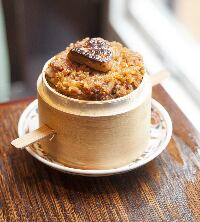
Stand-out dishes from the rest of the menu include Mangalitza rib rice (pork ribs mixed with rice and spices and steamed on a bed of sweet potato; pictured, right); cast iron beef tri tip (40-day-aged beef served on a cast iron skillet with honey and black pepper sauce and Roscoff onions); tomato and smoked eel tartare with dried soy daikon; and glazed fried chicken wings with Thai basil and caviar.
Spend per head is anticipated to be between £35 and £55 including drinks, but those who really want to explore the menu and drinks offering will spend considerably more than that.
It’s an ambitious menu that shows the trio has its sights set on a hard-core foodie crowd that doesn’t shy away from unusual ingredients, flavours and textures, with only a handful of dishes a mainstream audience would recognise.
Its contemporary layout and restraint when it comes to the number of dishes certainly sets it apart from the local Chinese competition, too.
The drinks selection is every bit as unconventional as the food. A 10-year-old Shaoxing wine – a product that most westerners associate with cooking rather than drinking – takes pride of place at the top of the food menu (£13 for 100ml).
The wine list is much larger than Bao’s and there is an emphasis on esoteric cocktails, with the upstairs bar offering an ‘omakase’ experience of three cocktails made with seasonal fruits and vegetables. Tea is taken just as seriously, and the trio have gone to great lengths to import rare Taiwanese teas and will offer tea ceremonies alongside a tea and whisky matching menu (see Tea for three).
Sourcing headaches

Xu’s menu will, in fact, feature a number of Taiwanese products and ingredients, many of which have not proved easy to obtain. In the beginning, Chang would make regular trips to Taiwan and return with a bulging and sometimes suspiciously fragrant suitcase, but the group has now outgrown this approach.
“We’re too busy and the sites are too busy for that to work anymore,” she says. “But I go back and seek out new things. The last time I was there, I found an aged rice vinegar with this amazing deep, mellow taste.”
Apparently, the man that makes said aged rice vinegar is not that interested in shipping the product to the UK. This is a common stumbling block for the trio, who are, in many cases, the first to attempt to import these small batch, traditionally made Taiwanese products.
That transcendental white soy sauce is only available because Chang’s mother grudgingly agreed to have an entire pallet shipped to her home in Taipei, which was shipped from there to London.
“Suppliers in Taiwan are often reluctant to supply us with their products,” says Wai Ting, who oversees the dining room and drinks offer.
“They say they have a strong market for their products in Taiwan and that it’s complicated to get things shipped over here. It takes a lot of effort to get them to play ball. But it is getting easier with some suppliers as our reputation grows.”
Xu’s close proximity to Chinatown makes securing some items – especially fresh fruits and vegetables – much easier, because many of the trio’s suppliers are based there. “We’re already using a Chinatown bakery and we’re sourcing fresh noodles from this fantastic fresh rice noodle place down a very promising-looking alley,” says Shing Tat, who manages the overall business and much of the creative.
“I’m sure we’ll connect with some interesting new suppliers soon. Being near Chinatown chimes with the old school, institutional feel we’re trying to create and we’re also very near our existing restaurants.”
A wok-free zone
Xu has a markedly different kitchen set-up to its Chinatown neighbours. Like Bao, there are no woks, a surprising omission given the abundance of wok-fried dishes in Taiwanese cuisine (not to mention the incredible speed the fiercely hot cooking vessel brings to the east Asian kitchen).
“The wok is very important in Taiwan,” admits Chang. “But we don’t have a wok section because we’re quite methodical in the way we cook. We gravitate to high-tech cooking methods. For example, the pork belly for gua bao would normally be cooked in a pot over a flame but we prefer to cook it in a combi oven set to an exact temperature. That way it is the
same whoever cooks it.”
Eschewing woks also creates a useful point of difference to Chinese restaurants and the handful of Taiwanese restaurants in the capital, which invariably major on stir-fried dishes.
The basement kitchen has been specced with a six-burner, a plancha, a deep-fat fryer, a Josper grill and rotisserie with the only clearly identifiable piece of Asian cooking equipment being an enormous steamer of the type used at dim sum restaurants.
The decision to go wok-free at Xu has made staffing easier. Specialist wok chefs are hard to find and expensive to employ and, when it comes to employing Asian chefs, there is a generational divide. Speak to older Asian chefs and restaurateurs and they’ll likely tell you that it’s essential for the majority of the team to have grown up eating the food they’re cooking. In contrast, younger business owners tend to be a bit more flexible.
“We are a little more relaxed about it,” says Chang. “We employ some Chinese and some Taiwanese chefs. It’s difficult to say what the split will be at Xu because we’re still recruiting, but, at Bao, the ratio of western chefs to Asian chefs is around 50:50. If people have a good palate, a good knowledge of ingredients and they’re interested, we can work with them.”
Raising the culinary profile of Taiwan
Shing Tat and Wai Ting have the restaurant industry in the their blood.
“Subconsciously, I think it’s something we always wanted to do, although every member of our family told us not to. They said to get an office job. But we are very interested in food,” says the former.
The trio are tight-lipped about Bao’s expansion prospects, but it seems likely more restaurants will open under the brand once Xu has bedded in.
An understanding of the mechanics of the restaurant business has clearly helped, but the trio’s creativity and determination to do things differently is the main factor behind their success. The fact that none of them have really worked for other restaurants has been a help rather than a hindrance in this regard.
“I don’t really consider myself a chef. I certainly don’t have all the skills a senior chef would normally have,” says Chang, who, when Xu opens, will be found at the pass co-ordinating service and checking plates.
“But we have the ideas and we are also able to pay close attention to the little details. We cook food that we want to eat ourselves and we have a strong cultural connection to it also.
“In Asia, Taiwan is seen as a foodie destination, but that’s certainly not the case here. One of the main motivations for opening Xu is to show what else the country has to offer.”
The trio have already done a lot to raise the culinary profile of a country that, for most westerners, is more associated with mass-produced electronic goods than interesting cooking and artisan products. Xu looks set to have a similar impact to Bao. Expect to see that head-on guinea fowl popping up on your Instagram feed soon.
Brew kids on the block: Tea will be big at Xu
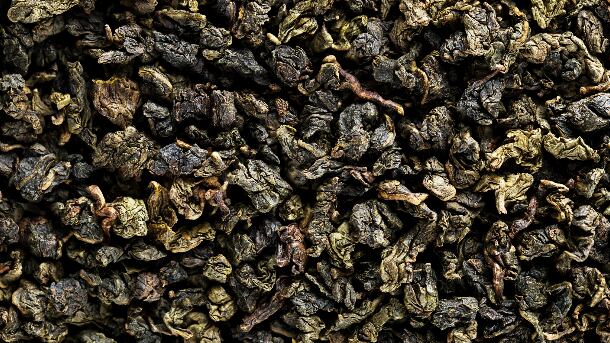
(Photo: Eugenegg / iStock)
One of the teas to be offered at Xu arrives at the restaurant in a hollowed out pomelo that has been steamed, dried and blackened over an open flame. “We have to go digging for the tea in the pomelo,” says Bao co-founder Wai Ting. “It has an amazing sour and smoky taste and it’s also good for the throat.”
Top-end restaurants have vastly improved their tea offerings in recent years, with small-batch, seasonal teas being treated with the same reverence as fine wine at some establishments. But Xu is hoping to take tea in restaurants to new heights by importing Taiwanese varieties that have never been available in the UK and rolling tea drinking into the whole dining experience.
Taiwan is famous for its tea and is particularly associated with oolong. The island is small but its varied topography and weather result in a varied output. In fact, a map of the island’s tea areas is every bit as complicated as a wine map of the Loire Valley or Bordeaux, with the tea grown at the highest elevations commanding the highest price.
There will be Taiwanese tea ceremonies offered both before and after the meal. Taiwan’s take on the tea ceremony is a little less formal than its neighbour’s across the Japanese Sea, but there is still a big emphasis on etiquette and ritual.
“It’s a little less particular than the Japanese one,” says Wai Ting. “It’s informal and sociable. The idea is to bring people together. Our take on it will involve a tasting of a number of different teas. We’ll have a tea master on site to oversee everything. We’ll also sell our teas for brewing at home for the first time. People are always asking to purchase the teas we serve at Bao so we’re anticipating the retail element to do well.”
There will also be a tea and whisky matching that will explore tea’s affinity with Taiwanese whisky, most notably the mulita-ward winning distillery Kavalan.“We’re in the process of trying to secure the full range from the distillery,” says Wai Ting. “But much like Japanese whisky, as soon as they pick up an award they sell out, so it’s been challenging.”
Photos: All portrait shots and on-site portraits by John Carey or supplied by Bao & Xu, unless otherwise noted.
This article originally appeared in the print edition of Restaurant magazine, and was adapted for the web by Hannah Thompson. Subscribe to Restaurant magazine from just £63 per year here!

